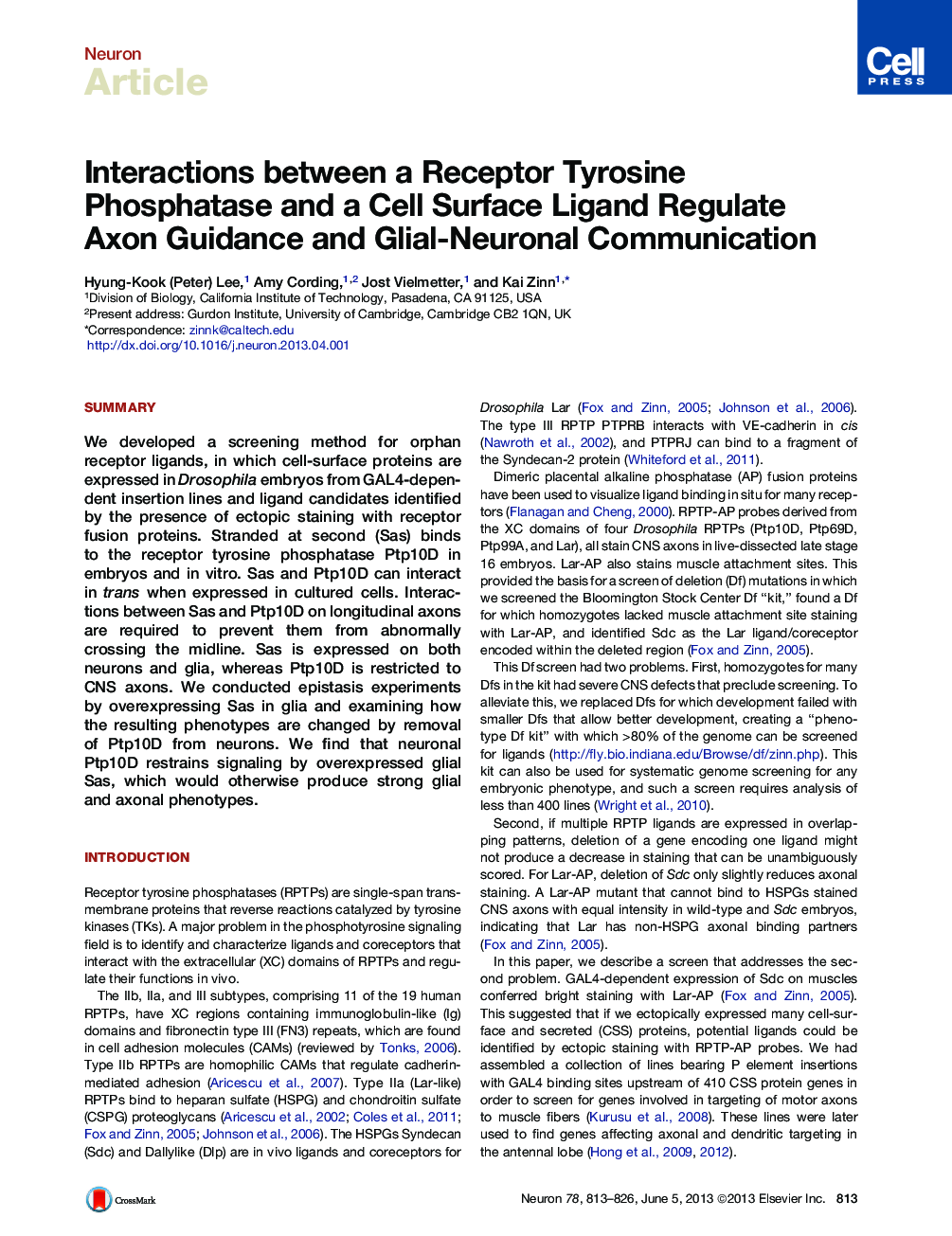| Article ID | Journal | Published Year | Pages | File Type |
|---|---|---|---|---|
| 4321342 | Neuron | 2013 | 14 Pages |
•A method to find genes encoding ligands for orphan receptors•A type III receptor tyrosine phosphatase, Ptp10D, binds to Sas, a cell surface protein•Sas and Ptp10D work together in longitudinal axons to regulate midline crossing•Glia and neurons can communicate via interactions between Sas and Ptp10D
SummaryWe developed a screening method for orphan receptor ligands, in which cell-surface proteins are expressed in Drosophila embryos from GAL4-dependent insertion lines and ligand candidates identified by the presence of ectopic staining with receptor fusion proteins. Stranded at second (Sas) binds to the receptor tyrosine phosphatase Ptp10D in embryos and in vitro. Sas and Ptp10D can interact in trans when expressed in cultured cells. Interactions between Sas and Ptp10D on longitudinal axons are required to prevent them from abnormally crossing the midline. Sas is expressed on both neurons and glia, whereas Ptp10D is restricted to CNS axons. We conducted epistasis experiments by overexpressing Sas in glia and examining how the resulting phenotypes are changed by removal of Ptp10D from neurons. We find that neuronal Ptp10D restrains signaling by overexpressed glial Sas, which would otherwise produce strong glial and axonal phenotypes.
